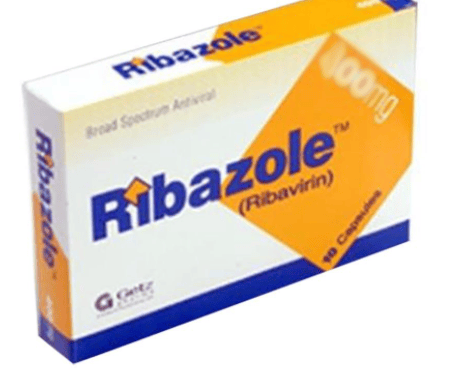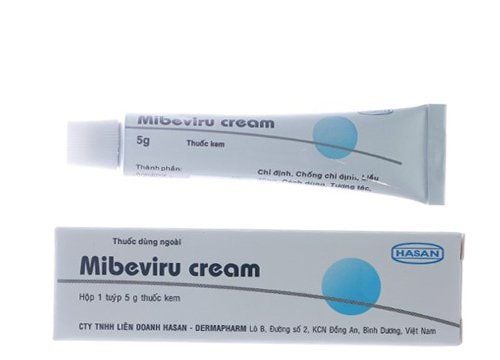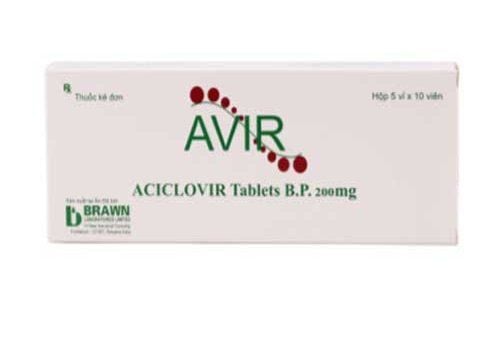This is an automatically translated article.
Ribanic is formulated as a film-coated tablet with the main ingredient in each tablet being Ribavirin 500mg. To use the drug safely and effectively, patients need to consult their doctor before taking Ribanic 500.
1. What is Ribanic?
The main ingredient in Ribanic is the active ingredient Ribavirin, which is an antiviral drug with broad spectrum activity and low toxicity. The active ingredient Ribavirin is active against at least 20 different RNA and DNA viruses in vitro. In vivo studies have demonstrated a broad spectrum of activity against both RNA and DNA viruses.
Clinical results have demonstrated the effectiveness of Ribavirin when used by different routes and formulations (including oral, topical, nebulized and intravenous). The drug is effective against viral hepatitis A, B and C; chicken pox; measles; Herpes zoster; Herpes simplex types I and II ; influenza A, B; respiratory syncytial virus (RSV) and many viruses that cause dengue fever.
Ribavirin is structurally similar to Nucleotide guanosine, one of the four basic components of RNA. RNA is an essential part of protein synthesis, as is the messenger with the genetic code of RNA and DNA viruses.
Ribavirin inhibits RNA messenger, prevents viral replication and stops infection. Ribavirin blocks viral replication but does not affect normal cell function.
Ribavirin has had a broad spectrum of antiviral activity in in vitro and in vivo studies, inhibiting viral replication in hepatitis B virus in the "woodchuck" subtype.
Ribavirin can produce clinically significant efficacy in patients with chronic hepatitis C.
A very important property of Ribavirin is that the virus cannot produce mutants resistant to this drug. This may be the result of a variety of mechanisms for the antiviral activity of the drug.
Ribavirin does not cause any serious side effects if used in doses similar to those used in humans under clinical conditions.
2. Indications and contraindications of the drug Ribanic
Ribanic 500 is indicated in the following cases:
Viral hepatitis A, B, C. Herpes zoster . Herpes simplex . Shorten the duration of the flu. Viral diseases in children: Measles, chickenpox, mumps, respiratory syncytial. Ribanic is contraindicated in the following cases:
Severe renal failure (ClCr < 30mL/min). Chronic anemia (Hb < 10g/dl). Pregnant women. People who are hypersensitive to Ribanic. Pay attention to precautions when using Ribanic in the following cases:
Cirrhosis. Progressive renal failure. Anemia : Discontinue treatment for 2 weeks, if anemia improves, continue taking Ribanic at the same dose; If anemia does not improve, reduce dose to 200 mg/day.
3. Dosage and how to take Ribanic
Ribanic drug is used orally, the dose should follow the doctor's prescription, the reference dose in specific cases is as follows:
Adults: Hepatitis A use a dose of 800mg/day, divided out several times a day, use continuously for 10-14 days. Hepatitis B and C: Use a dose of 800 - 1200mg/day, divided into 3 - 4 times a day, used continuously for 6 months - 1 year. Herpes zoster/Herpes simplex: Use a dose of 800 - 1200mg/day, divided 3-4 times a day, continuously for 7-10 days. Prophylaxis of recurrence of genital herpes using a dose of 400mg/day, divided into 1-2 times a day, continuously for 6 months.
4. Side effects of the drug Ribanic
During the use of Ribanic, you may encounter some side effects of the drug, including:
Mild hemolytic anemia. Muscle pain. Nausea. Tired. Itchy . Increased bilirubin. Increased serum uric acid. Digestive disorders . If you notice any unusual symptoms appearing during the use of Ribanic, you should immediately notify your doctor or go to a medical facility for timely medical assistance.
Above is information about uses, dosage and precautions when using Ribanic medicine. To ensure safety for your health and maximize the effectiveness of your treatment, you need to take Ribanic exactly as directed by your doctor.













